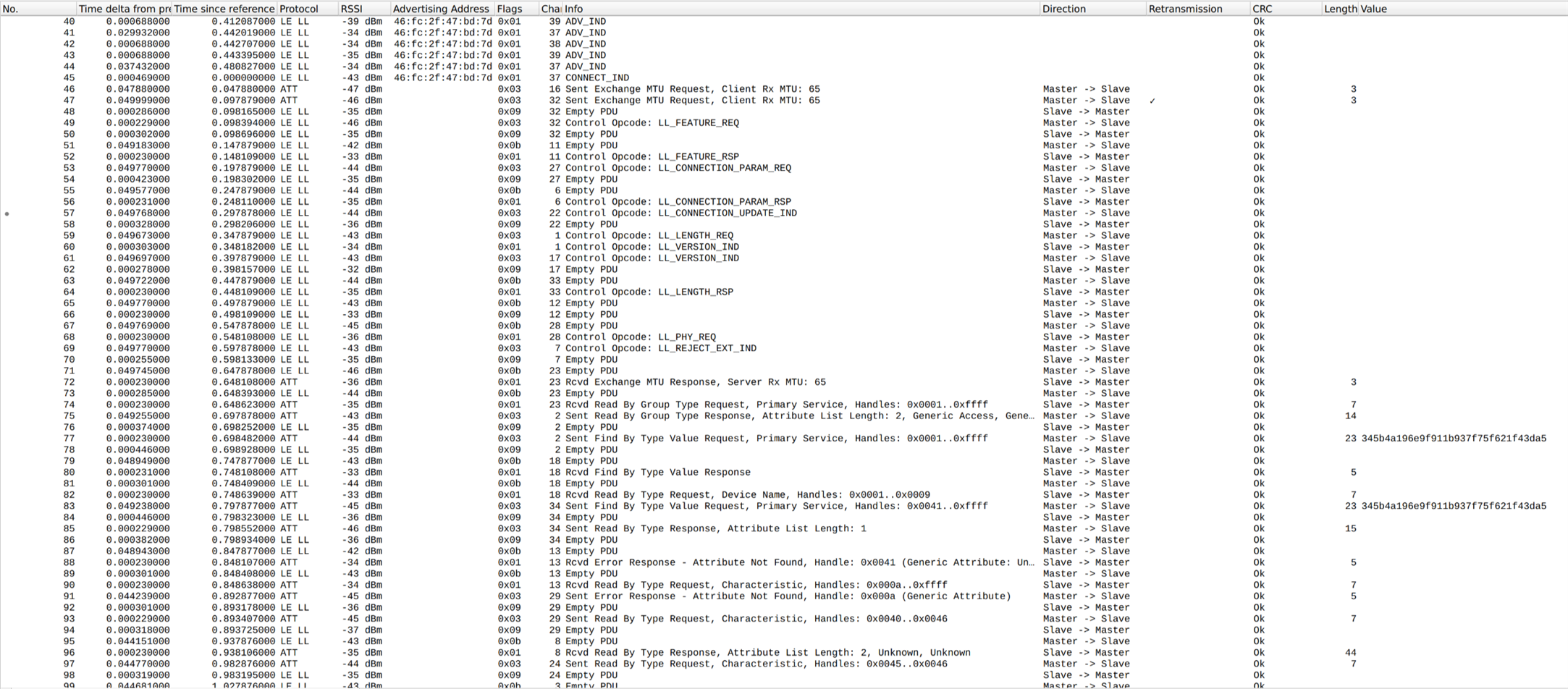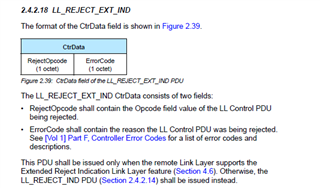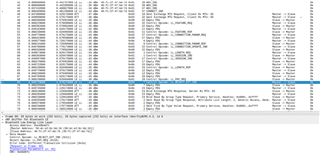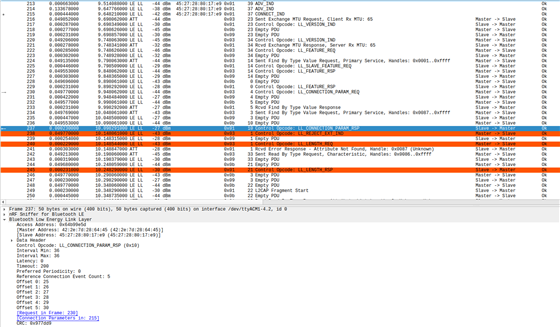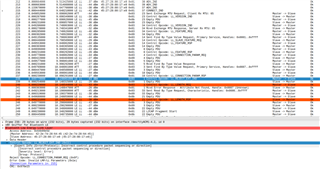Other Parts Discussed in Thread: CC2640R2L,
Hi,
I am working with custom HW base on mentioned chip. Most of the code is based on simple central. Simplelink CC2640R2F SDK 5.30.0.03, slave device is Samsung A12.
The issue is when I try to send LL_CONNECTION_PARAM_REQ as soon as possible to make the initial handshake as fast as possible, other LL requests fail due to wrong sequencing of LL transactions (interleaving).
Some of these requests are probably sent by BLE stack itself (LL_FEATURE_REQ, LL_LENGTH_REQ,...).
When I issue LL_CONNECTION_PARAM_REQ (capture@201) asap after receiving GAP_LINK_ESTABLISHED_EVENT, it get's mixed up with LL_LENGTH_REQ (capture@213), causing this request to be ignored by slave device resulting in 40 s timeout and connection drop. (same as in related forum thread)
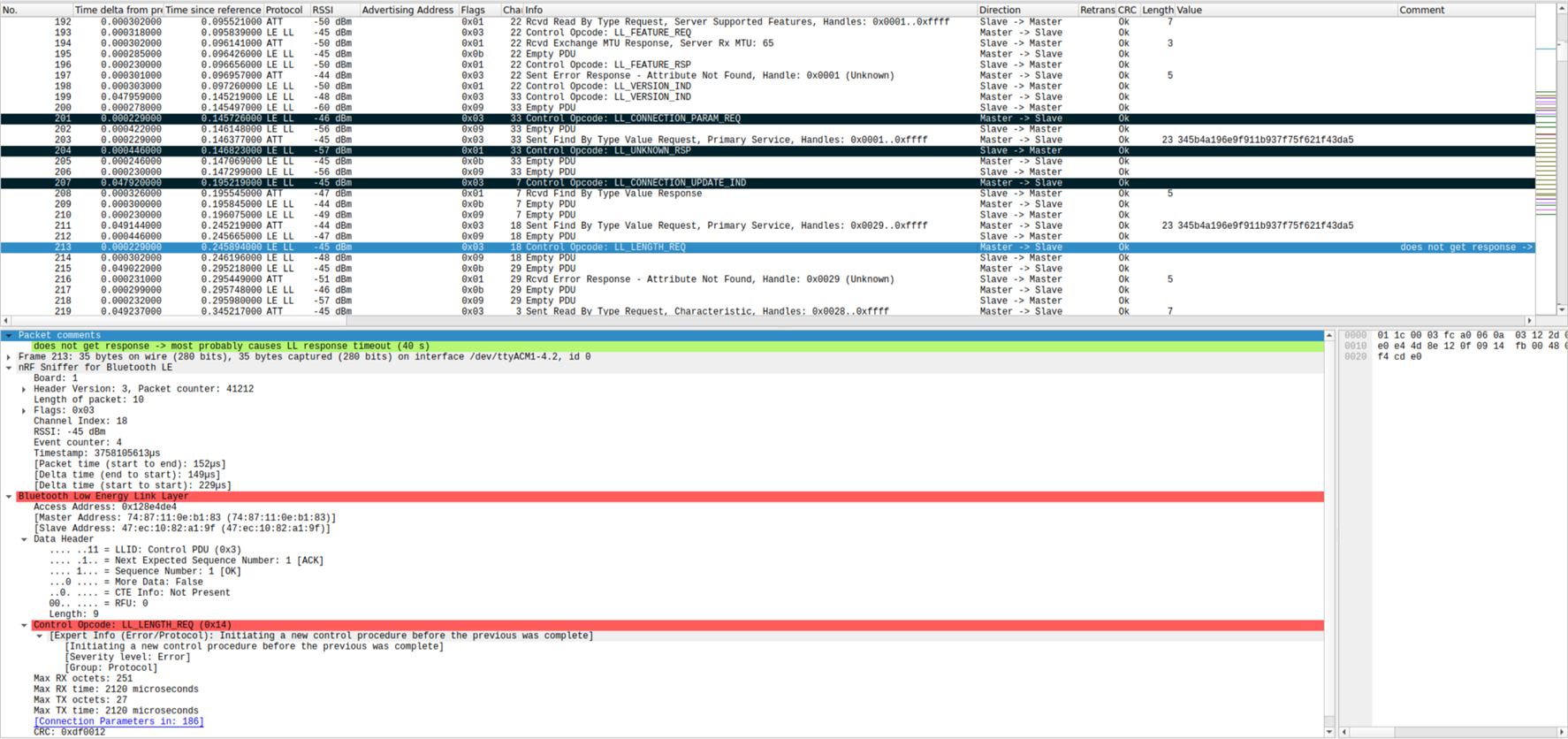
Please see attached Wireshark capture for more details.ble_android_conn-param_response_connection_dropped.zip
Is there a way how to avoid breaking of LL requests sequencing? (e.g. some event from BLE stack to signal, when it's handshake/negotiations are finished)



